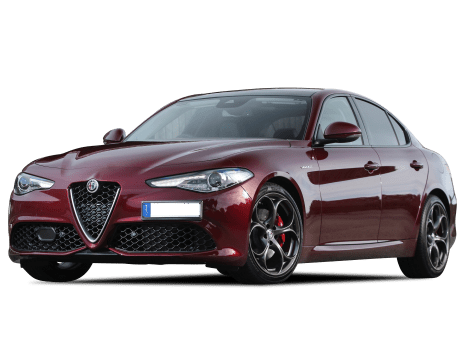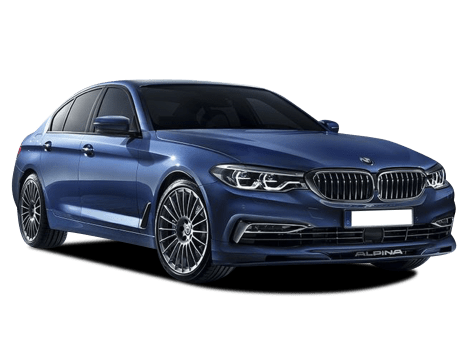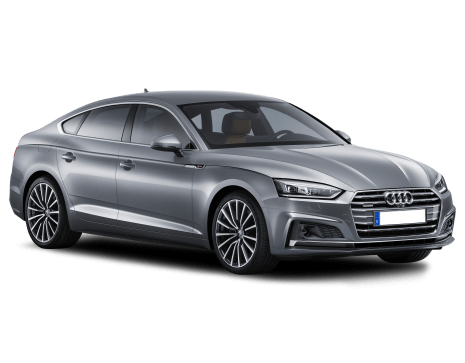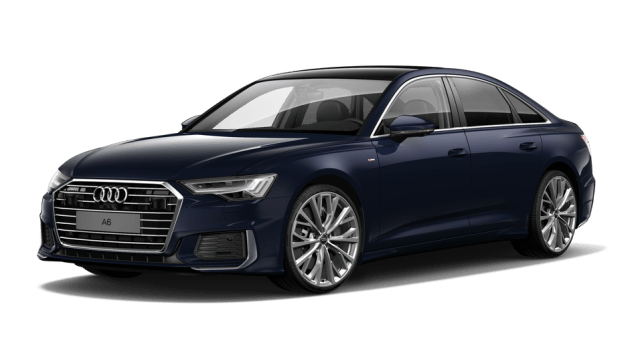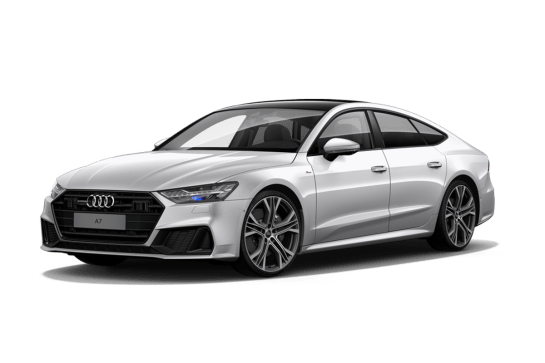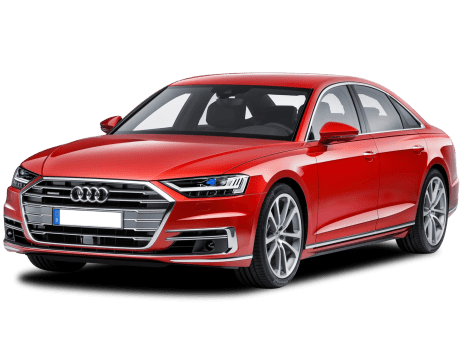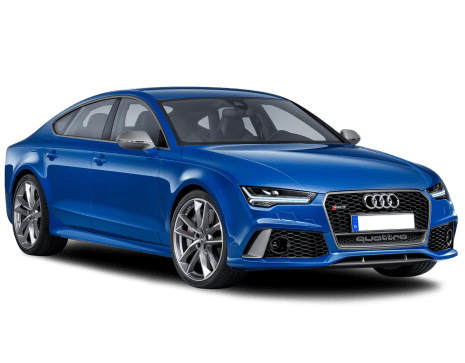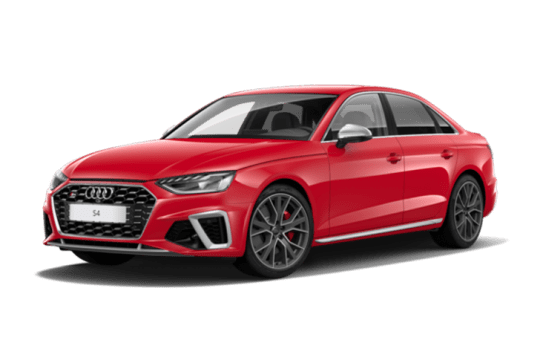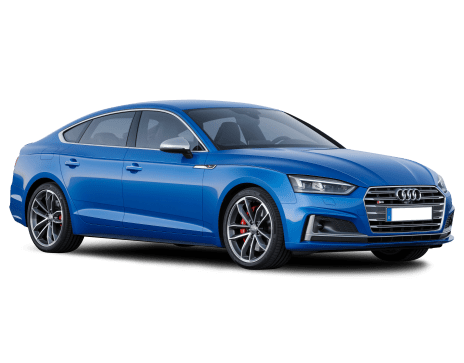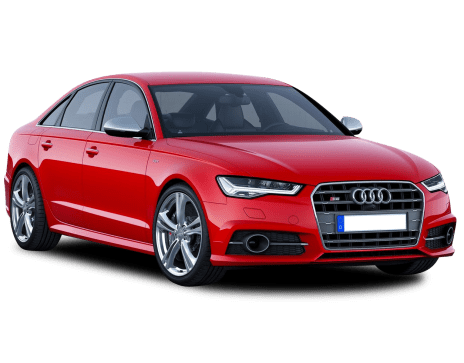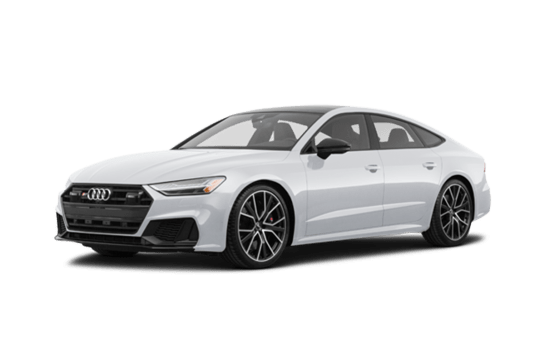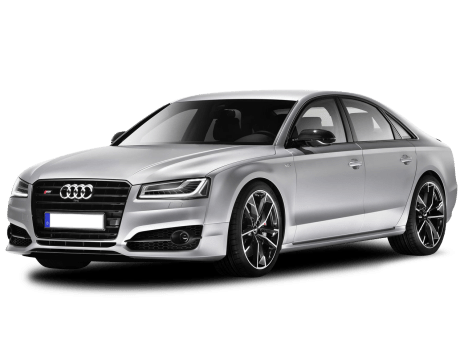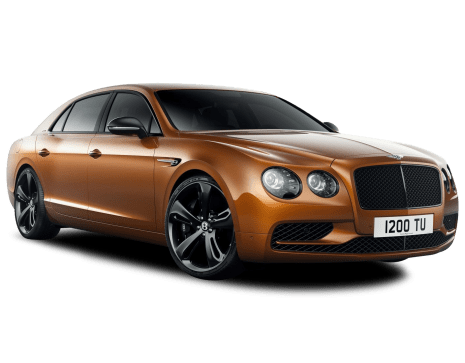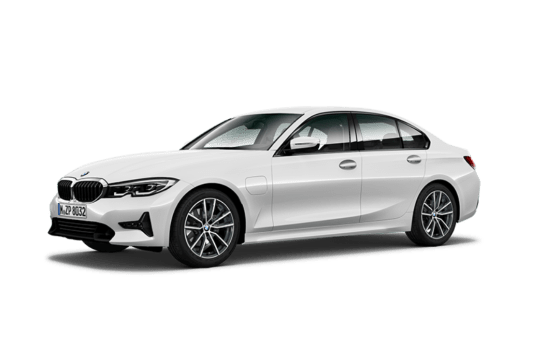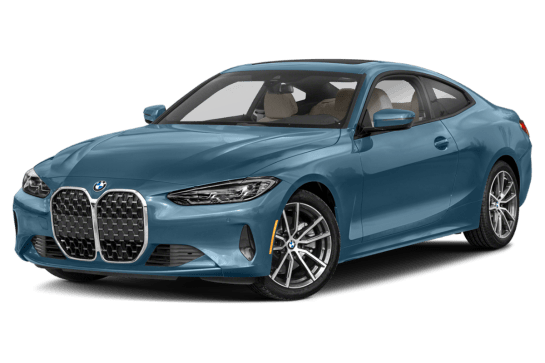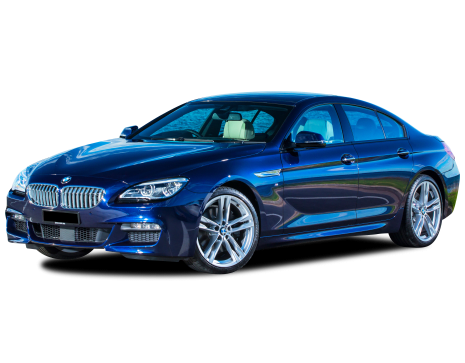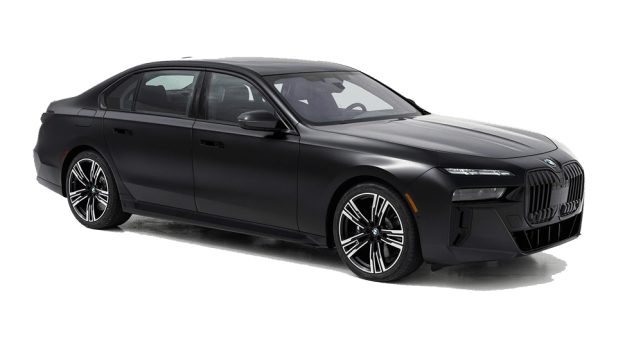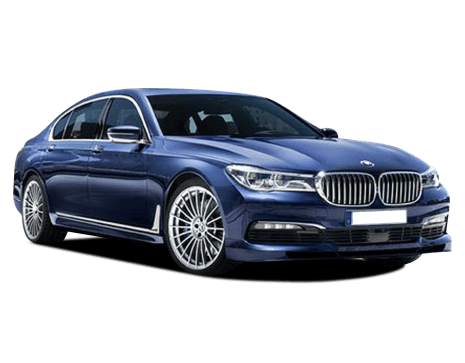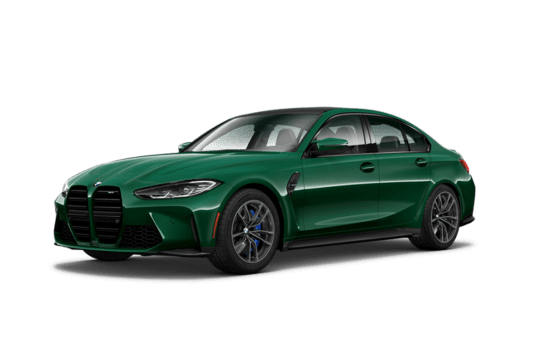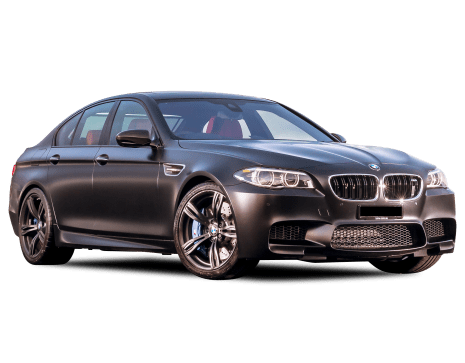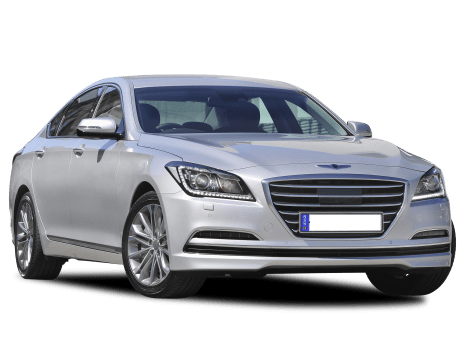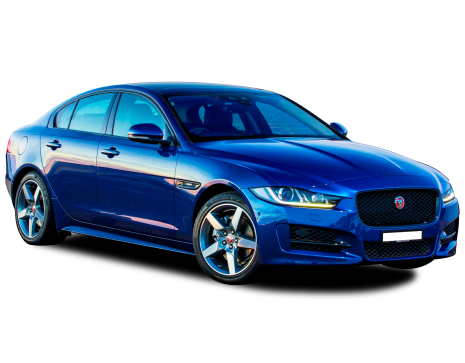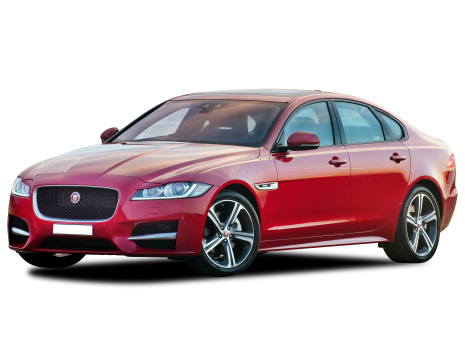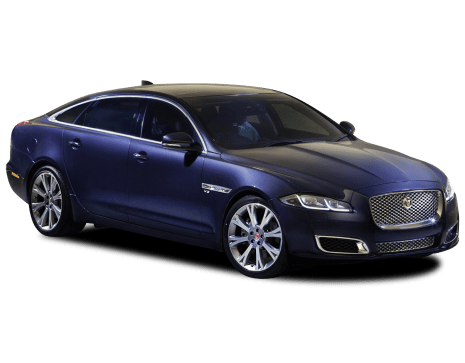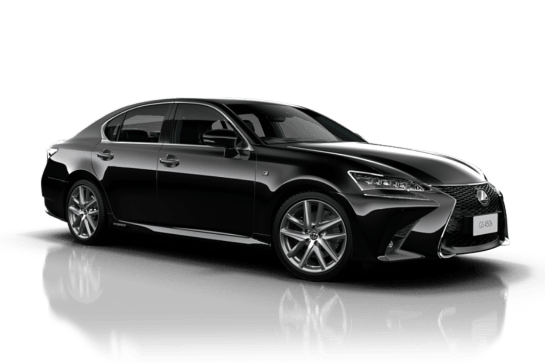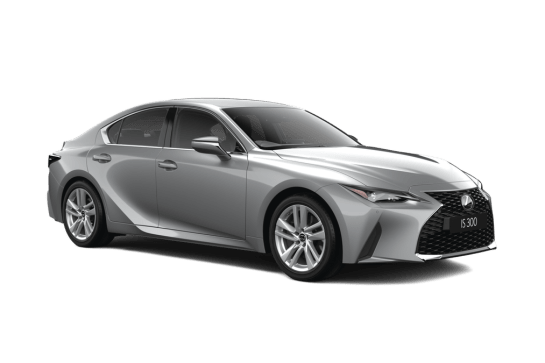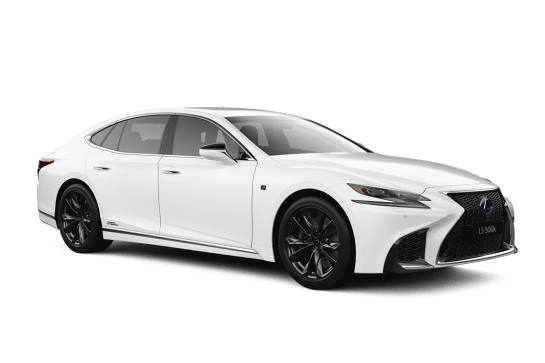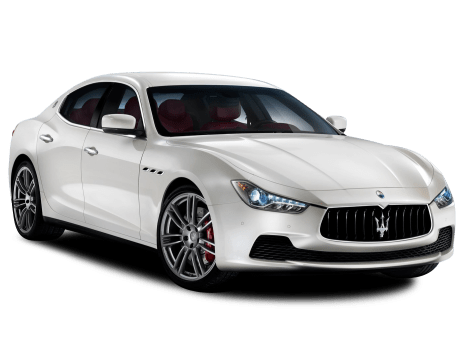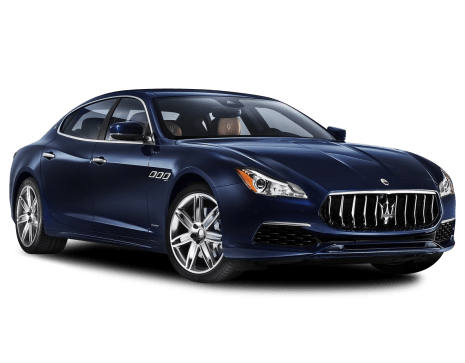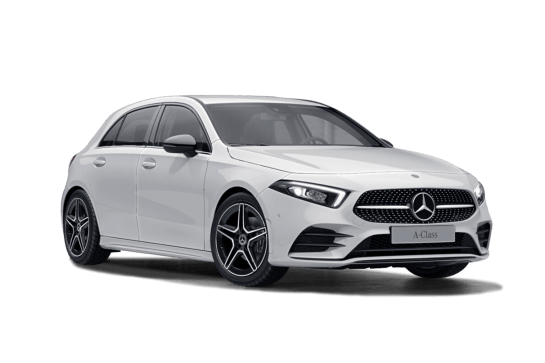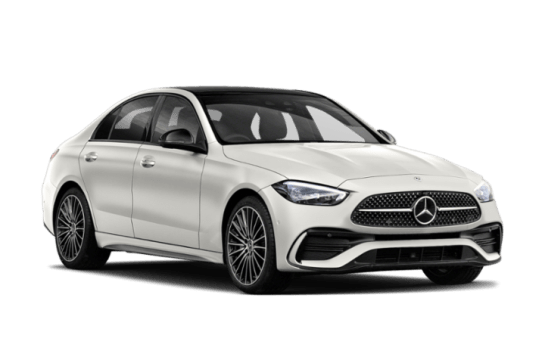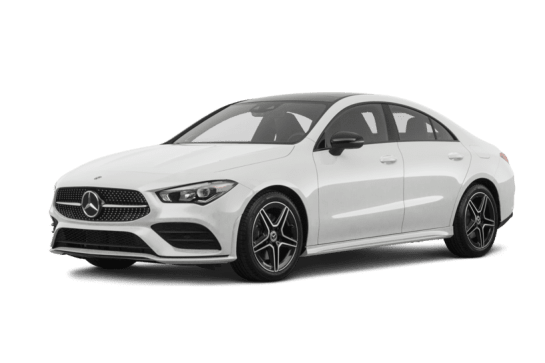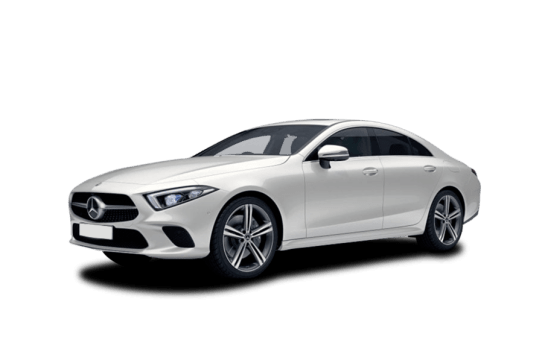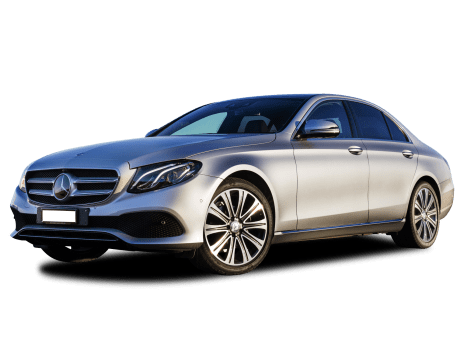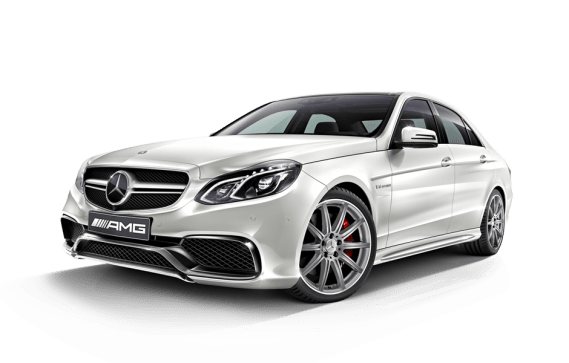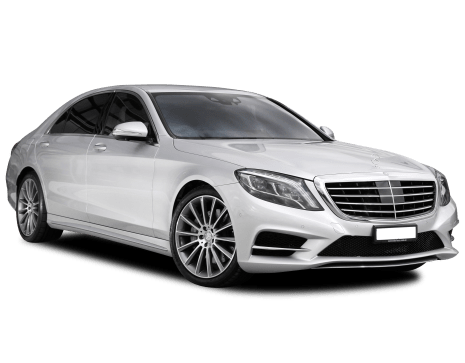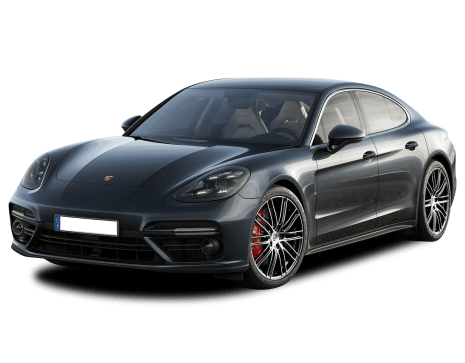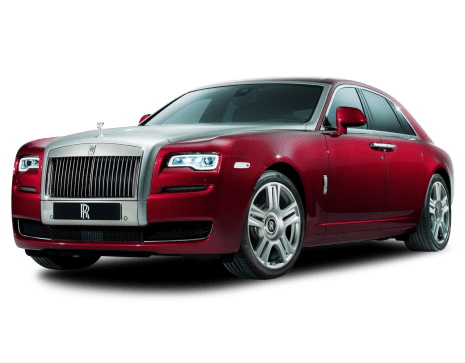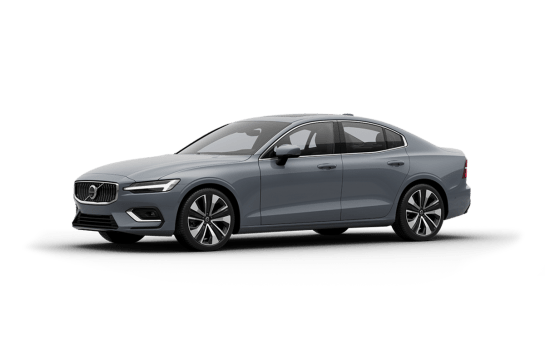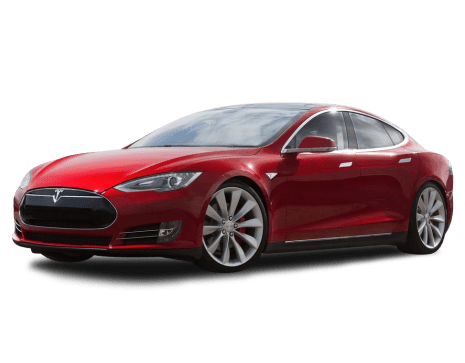
Tesla Model S VS Audi S8
Tesla Model S
Likes
- Rocketship speed
- Clean interior design
- Ever-improving proposition
Dislikes
- Sadly, it's not a sports car
- It's a lot of money
- Lack of convenient charging
Audi S8
Likes
- Technical extravaganza
- Elegant looks
- Punchy V8
Dislikes
- Tricky to find a space big enough
- Pricey
- Short warranty
Summary
Tesla Model S
If you have even a passing interest in the Tesla Model S, you'll have seen the endless internet videos where someone has lined up a Ferrari, Lamborghini, or another fast exotic car you could name, to race against it.
There's a long build-up, usually involving men who can't operate a baseball cap, a drag strip and idiotic words in the headline like "destroys" or "rips", or whatever. There's usually a bunch of honking bros with bad haircuts watching on, already planning their next viral video where they set a perfectly good mobile phone on fire.
It's facile and idiotic and doesn't give you any real clue as to the depth of whatever supercar it has "humiliated" or, just as importantly, the depth of the Model S and its spectacular engineering.
So, I won't be spending the next thousand words building up to the conclusion that the Model S P100D with Ludicrous Mode is up there with the world's fastest production cars from 0-100km/h, because I'll tell you now that it is, and it does it in a claimed 2.7 seconds.
Now that's out of the way, there's quite a bit more to the Model S than a "broken" Nissan GT-R owner weeping into their bento box.
| Safety rating | |
|---|---|
| Engine Type | — |
| Fuel Type | Electric |
| Fuel Efficiency | —L/100km |
| Seating | 5 seats |
Audi S8
Big sedans are not in vogue at the moment and huge luxury sedans were on the way down before the humble Commodore and Falcon departed the upper end of the sales charts. The Germans, who have always done a spectacular job of these flagship sedans, cheerfully persist with these cars.
Absolutely loaded with fascinating technology that bleeds its way down to the more mainstream models, they represent the zenith of the brand's innovation and style. The A8 is certainly that.
What it isn't, is particularly sporty, but after two years since its launch, V8 power has reached the fourth-generation super-sedan to deliver the latest iteration of the iconic S8.
| Safety rating | — |
|---|---|
| Engine Type | 4.0L turbo |
| Fuel Type | Premium Unleaded Petrol |
| Fuel Efficiency | 10.2L/100km |
| Seating | 5 seats |
Verdict
Tesla Model S8.3/10
I spoke to a friend who bought a Model S before one had even hit the ground here in Australia. He chuckled when I told him how much this car cost but then said something I'd already suspected. "My mates who own a P100D would never drop that kind of money on a normal car. Buying a Tesla is like buying shares in the company, you're buying into the future."
And that's kind of the point. A $300,000 Audi RS7 (fully-loaded, obviously) is a bit slower in a straight line, looks just as good, is extremely well-built and emits noises that make people like me go as weak at the knees (just as the Model S' acceleration does). And would probably win a 10 lap race with the Tesla around Mount Panorama.
The Tesla is the future of cars. It may still be decades before the internal combustion engine is gone, but Tesla buyers are getting the jump, and today the Model S is the best car in which to make that leap.
Does the Tesla have the spark you need or do old-fashioned hydrocarbons still light your fire?
Audi S87.8/10
The S8's existence is a source of joy for me because it's not a huge SUV. Yes, it's a huge sedan but it's a reminder that the technological flagship is alive and well, at least in Germany. And the important thing about these cars is the way the toys filter down through the rest of the range. That used to take years but we're seeing this cool stuff a lot more quickly, right down to the A1.
The S8 punches, and punches hard in this rarefied part of an already shrunken section of the market - the twin-turbo V8 matches its German rivals, it's lighter and it's as well-stacked as any of the three. What it doesn't do, however, is shout about itself the way the other two do. It's the incognito choice.
Design
Tesla Model S
The Model S is definitely the looker of the three Tesla models on sale (the Model 3 might be some way from release, but you can reserve one and it's... weird-looking). With a slinky, Jaguar XF/Audi A7 roofline and low-slung stance, it looks the business. Like the X, the detailing of the car's surfacing and panel gaps aren't where other $200,000+ cars are, but it has improved a lot over the last couple of years.
The styling is quite sparse, really. Teslas look like computer renders in real life, especially in white, with little in the way of jewellery or detailed design elements. And that's probably the idea. It's a cleaner design than when first launched, with a simpler, flatter snout that brings out the headlights better.
The cabin has improved even more than the exterior. It's still the same minimalist design, but it fits together much more tightly than it used to. The 17.0-inch portrait screen is still there in its central but skewed-to-the-driver position and is now up to version 8. It's an impressive interface, covering off the vast majority of functions in the car, and is mostly easy to use. The responsiveness is key to its usability. If it was underpowered, you'd quickly start demanding real buttons.
Audi S87/10
The sheetmetal is obviously very restrained given it's an Audi first, and secondly, it's just not done to go wild in this part of the market.
It's an A6 that's joined a gym, but didn't join that weird gym with men that can't run after you when you insult them (don't ask how I know this). Rolling on 21-inch wheels as standard, you can go up to massive 22s if you so choose.
The A8 created a subtle redirection of Audi's passenger car look, with the updated A4 and A6 both picking up on the horizontal bar between the rear lights and the huge grille framed by family lights with signature DRL patterns. The S8 builds on that with subtle S cues but nothing even vaguely shouty.
The interior acreage - or 'cabin', if you will - is very comfortable, but you already knew that. The multi-screen layout was first seen in the A8 and has now found its way into A7, Q8 and Q7 and is, as ever, brilliant to look at and use.
The MMI updates that have found their way into other cars are present and correct. Like the exterior, it's very restrained but not to the point of sparse minimalism, despite the lack of switches and buttons.
I really don't like the steering wheel, though, and I can't put my finger on why. It certainly isn't especially sporty-looking but I wonder if the standard flat-bottomed S wheel just looked stupid.
The materials are beautiful and everything fits together perfectly.
Practicality
Tesla Model S
The Model S is a rare car in this class in that it has an almost completely flat floor, meaning rear seat passengers don't have to negotiate a transmission tunnel. The two motors run physically independently of each other so there's no crankshaft to get in the way.
The floor is thicker than a normal car, it's like a big skateboard underneath. That means your knees are up higher, which might cause numb bum on a long trip. The rear seats are comfortable enough, but middle seat occupants might feel like the outboard passengers are falling into them.
The view out isn't too bad given the rising window line, and if you've got the big two piece sunroof (without cover, irritatingly... ), it's quite airy out back. And hot (with the sunroof), but you do get rear air-con vents.
The boot is an eminently sensible 744 litres with the seats up and 1795 with the seats down, although the floor doesn't fold flat. While it's a big boot, it's relatively shallow so your suitcases go in on their sides. Up in the front boot (or froot) there's another 150 litres, so you can pack a lot in to the Model S. And with all that torque, when you do load it up, the extra kilos barely make a dent on the performance.
Audi S88/10
The cabin is clearly built with rear seat passengers in mind, with rear leg and headroom configured for those continent-crossing drives.
The S8 has plenty of comfort for two rear seat passengers and a few amusing options to while away the hours in traffic or on the autobahn.
That doesn't mean the front seat passengers are in purgatory, with huge but supportive seats adjustable in all conceivable directions.
Front and rear rows score a pair of cupholders and bottle holders while the boot is a handy, if not awe-inspiring, 505 litres.
Price and features
Tesla Model S
Tesla is basically a technology company - well, a battery company - that makes cars, so the features and options reflect that. It's a gadget-laden five-door hatch powered exclusively by electricity and seemingly full of things that will drain the batteries quickly.
If you view the car's price purely through its standard features list and the cost of options, you're missing the point. If it had a 3.0-litre turbo six, there's no way you'd pay this kind of money for the Model S. But it doesn't have that, it has a bleeding edge battery pack and propulsion system.
The Model S can be had for as little as $118,652 for the 60 offering 400km range, rear-wheel drive, and 5.8s 0-100km/h (but move quickly, Tesla has just axed this model), or as much as this P100D which starts at $250,582.
Standard are a seven-speaker stereo, leather-like trim, 19-inch alloys, reversing camera, 17.0-inch touchscreen, keyless entry and start, forward collision warning, digital dashboard, electric front seats, sat nav, auto LED headlights, auto wipers, internet connectivity via included SIM card, power mirrors and windows and air suspension.
Our P100D came with 21-inch grey 'Turbine' wheels ($6800), panoramic roof ($2300) multi-coat pearl paint (white, $2300) and carbon-fibre interior trim bits for $1500, as well as a carbon lip spoiler for another $1500.
We also had the 11-speaker audio upgrade (with neodymium magnets, don't you know) for $3800 and the 'Subzero Weather Package' (seat heaters, heated steering wheel, wiper blade defrosters and washer nozzle heaters) and on-board high-power charger (speeds up charging with the 'Tesla Wall Connector', $2300).
There was also 'Enhanced Autopilot' ($7600) and 'Full Self-Driving Capability' ($4600). The former is meant for highway running, and comes with four cameras (up from one) and 12 ultrasonic sensors around the car, as well as upgraded processing power to run it all.
The full self-driving is meant for around town. The idea is you punch in a destination, or speak to the computer or passive-aggressively stay silent, which triggers the car to check your calendar and take you to the address in the appointment. Part of the extra cost of that is yet more cameras (up to eight), more sensors, and more number-crunching power.
We would love to tell you how all that worked, but being Tesla 'Hardware 2', it's not ready yet. While these features are being fleet-tested by 1000 cars in the US, your car will run it all in "shadow mode" for data and behaviour validation. One day you'll go to your car and a software update will be ready to download and install the functionality.
Unusually, you can retrofit both of these features for about $1500 more (each) than if you order them up-front. That's very cool and Tesla is probably the only car company in the world that will let you do it.
The 17.0-inch screen's software is regularly updated, like a mobile phone's. Also like a mobile is the sometimes less successful update, in this case the slightly bewildering and difficult-to-use music interface that is very keen for you to make a selection with voice commands, but not ones that go through your phone.
A 'Premium Upgrades' package adds the overkill of a 'Bioweapon Defense (sic) Mode' that knocks out 99.97 per cent of exhaust particulates and other contaminants, using two activated carbon air filters for other nasties like NO2 and hydrocarbon exhaust fumes.
LED turning lights and fog lights, real leather on the armrests, steering wheel and lower dashboard (if you also have leather seating), nappa leather and Alcantara on the dashboard, soft LED interior lighting, power tailgate and backlit door handles for $5300. Thankfully, the silly self-opening front doors in the Model X's pack aren't in this little lot.
Grand total? $297,792. On the road in, say, NSW... $313,013. Youch.
Audi S87/10
For $260,000 there is a lot to get through, as there is on the less sporty A8. Start with huge 21-inch alloys, 17-speaker Bang & Olufsen stereo, panoramic sunroof, matrix LED headlights with laser lights, soft-close doors, acoustic glazing, leather trim, S front seats, extra leather over the A8, Alcantara headlining, carbon inlays, four-zone climate control, heated and cooled front seats, 'Virtual Cockpit' with S mode, and a tyre repair kit.
You also get active suspension, a sport version of the 'quattro' all-wheel drive system (with a sport differential), and a walloping great twin-turbo V8 to get you moving.
A massive touchscreen on the centre stack (familiar in Q8, A7 and Q7) hosts Audi's 'MMI plus' system, which is very good and does away with the console-mounted rotary controller. It also has wireless Apple CarPlay to go with the console-bin wireless charging pad. Android Auto is still USB. 'Audi Connect plus', now in full-featured glory, is also along for the ride.
Another technical highlight is the active noise cancelling which is meant to reduce the noise in the cabin the same way noise cancelling headphones do.
There's a clever rear seat remote control, which is a little detachable tablet to allow those who are being chauffered to faff around with various settings.
Our car had the $13,900 'Sensory Package', which adds a 1820-watt B&O 3D sound system with 23 speakers, electrically adjustable outer rear seats along with heating, cooling and massage function, and full leather.
Under the bonnet
Tesla Model S
The P100D ships with two electric motors fed by a huge battery pack which triples as the bulk of the chassis and a super-strong crash structure. It's also shared with the Model X SUV.
Combined power output is 568kW with more of it out the back rather than up front. Torque is quoted at 1000Nm, but it's likely more than that. Claimed 0-100km/h time is a mildly unbelievable 2.7 seconds, with a further two-tenths to be shaved off when you press and hold Ludicrous Mode and accept a warning that you'll wear the car out faster if you use it.
With 'Ludicrous Mode' comes not just software but a higher capacity fuse that allows more power to be drawn from the batteries for longer to provide the searing acceleration.
Audi S89/10
Under that long bonnet is a 4.0-litre twin-turbo V8 pumping out 420kW and a diesel-like 800Nm of torque.
That's a lot, even for this big bruiser. Obviously, being an Audi S-car, it has quattro all-wheel drive, which is fed by an eight-speed ZF automatic. Which is in everything now. Well, just about.
That huge torque figure is available between 2000rpm and 4500rpm while peak power arrives at 6000rpm. The 0-100km/h sprint is despatched in - gulp - 3.8 seconds.
As it's riding on the MLB platform, the mild hybrid system is a 48-volt set-up. A lithium-ion battery in the boot takes charge from the belt alternator/starter, which means the S8 can coast at higher speeds with the engine off and also cut out at 22km/h and under in traffic.
The system can also add up to 60Nm of torque in the right conditions for up to six seconds, and if it happened for me, I didn't notice it.
Efficiency
Tesla Model S
Zippo. Obviously with the new rules for Tesla Superchargers, it's not as cheap to own and run a Tesla as it was before (from January 2017, all new orders don't get free juice after the first 400kWh), but if you charge it at home (and can get away with it), it'll probably be cheaper than using Tesla's chargers. If you look, there's a company offering $1 per day charging for electric cars.
If I'd charged the car to 100 percent rather than the 80 percent recommended by Tesla for most charges (past that mark, the charge rate drops and the software has to slow to a trickle, doling out the electrons to the different cells), I would have managed just over 400km on the charge.
Audi S87/10
The 10.5L/100km official figure is, shall we say, optimistic. The launch drive was mostly highway so there's no real information to be gleaned from that, so we'll have to wait for real world fuel figures.
I'd say 12-13L/100km is achievable if you don't like having fun, in which case, the lesser A8 is probably for you.
Audi says the MHEV system saves 0.8L/100km with an early cut-out for the stop-start and the ability to coast on the highway for over half a minute at a time.
Driving
Tesla Model S
The first time I drove a Model S, I enjoyed the acceleration and the silence of the electric motor (this was back in the Dark Ages when even the P90 only had one motor). And that has remained, with the air suspension providing a firm but comfortable ride despite the P100D's 21-inch rims and very low profile tyres. Electric motoring in any electric car is addictive.
Much progress has been made (yes, I'm getting to the acceleration, stay with me) in the way it drives. The earlier cars felt too computer gamey, with little feel through the wheel or the seat of your pants. The steering is better, especially in Sport mode, but not a lot gets through the air suspension, so it takes a while to build confidence in the chassis.
On the freeway (look, you can read ahead if you must) it's amazingly quiet, with just a bit of a rustling around the mirrors. Well, of course it's quiet, it's electric. For chassis and NVH (noise, vibration and harshness) squashers, not having the marvellous engine noise means much harder work to dull the other noises you just don't hear when there's an internal combustion engine.
And there's the acceleration. As the driver, you obviously know it's quick. Mash the throttle and the response is instant, the horizon closing in on you like you're attached by a very stretched and immensely strong bungee strap that's just been released. The way cars disappear in your rear vision mirror is hilarious.
It's more fun as a passenger, though. The Model X elicited whooping and laughing, but the P100D's extra 0.6s-worth of acceleration over the P90D, delivered with a truckload more G-force, equals silence. One woman said she was glad I'd caught her before dinner rather than after, before bursting forth with a range of expletives. One passenger became quite emotional, almost crying. And not just because they were stuck in a car with me.
Audi S89/10
Driving any of the cars in this segment is a rare treat, whether it's the 'entry level' diesel or this top of the heap sports sedan. My day with the S8 was filled with the usual surprise and delight that only these tech-packed cars can deliver.
Heading out of the Sydney CBD in 'Comfort' mode, the car scans the road ahead and adjusts the active suspension accordingly. You already know it has active suspension because when you pull the door handle, the car lifts by 50mm to make it a bit easier to get in.
The suspension's party trick is flat-topped speed bumps - drive at one, brake a little and sense the way the body feels like it stays exactly where it is in the air but the suspension almost completely flattens the speed hump.
It's uncanny and almost unnatural, with just the tiniest change in altitude and no noise from the suspension.
It also manages the terrible narrow lanes of CBD thoroughfares with ease, the lane keep system letting you know if you're straying.
On to the motorway and you get a feel for its crushing performance. You won't hear much, though - the stereo's noise-cancelling system shuts out almost all tyre noise and consistent wind noise is largely banished, too.
I'm going to admit I gasped when I found some corners. Active suspension bodes well for the tricky stuff, as does the all-wheel steering. Both are exceptionally clever systems for making the car feel a lot smaller in town and in car parks but they're also really good if you want some fun.
But the way the rear-wheel steer adds agility to such a big car is hilarious and clever. While you can't quite chuck it around - and really, you're not buying an A8-sized car for that kind of nonsense - brisk progress is far from intimidating.
Now, obviously, a Ford Fiesta would drive away from the S8 in the really tight stuff but it would take some time to properly shake it. The colossal torque from the V8 hurls even this two-tonne-plus limo out of the corners in a most satisfactory manner.
It's surprisingly agile for a machine more than five metres long and two metres wide. If your passengers are corner enthusiasts, you'll all be having fun in near silence. It's oddly engaging to be moving at pace in such a hushed cabin.
Safety
Tesla Model S
The Model S comes with six airbags, ABS, stability and traction controls, three ISOFIX points, rollover sensors, emergency power disconnect. Additionally, when the software arrives, you'll have full AEB (ours was limited), self-driving and an ultra-clever active cruise that'll change lanes and overtake if the car you're following falls below your set speed.
The Model S scored five ANCAP stars, the maximum available, in April 2015 via the sharing arrangement with EuroNCAP.
Audi S88/10
The S8's considerable safety equipment list includes nine airbags, ABS, stability and traction controls, forward AEB (up to 250km/h), reverse cross-traffic alert, lane departure warning, various collision mitigation and protection systems, exit warning, lane keep assist, active cruise control and on, and on, and on.
The rear seat's centre airbag is terribly clever, popping up between passengers to stop you knocking heads. Another clever trick is the way the car detects a side impact is about to happen, boosting the height of the side about to cop it to try and get the sills to take more of the impact, rather than the door.
Given the relatively niche status of the A8, let alone the S8, there is no ANCAP crash test or safety rating. One imagines given the ton of safety gear a five star rating is all but assured. Even the US IIHS gave the A8 a miss.
Ownership
Tesla Model S
Tesla offers a four-year/80,000km warranty with a parallel eight year/unlimited kilometre warranty for the battery and drive units. Roadside assist applies for the four year warranty period.
Tesla offers two maintenance plans, three and four years in length. The three year plan costs $2100 and the four year $3175. Paying for the services individually over the same period will cost $2300 and $3425 respectively. That includes a wheel alignment (if needed), but it isn't particularly cheap when compared with 'normal' luxury cars.
Your first 400kW/h of recharging is free using Tesla's supercharger network, so that would be four full charges from empty (which you wouldn't do, obviously), or about 1600km worth. After that, it's 35c per kWh or $35 for a full charge.


